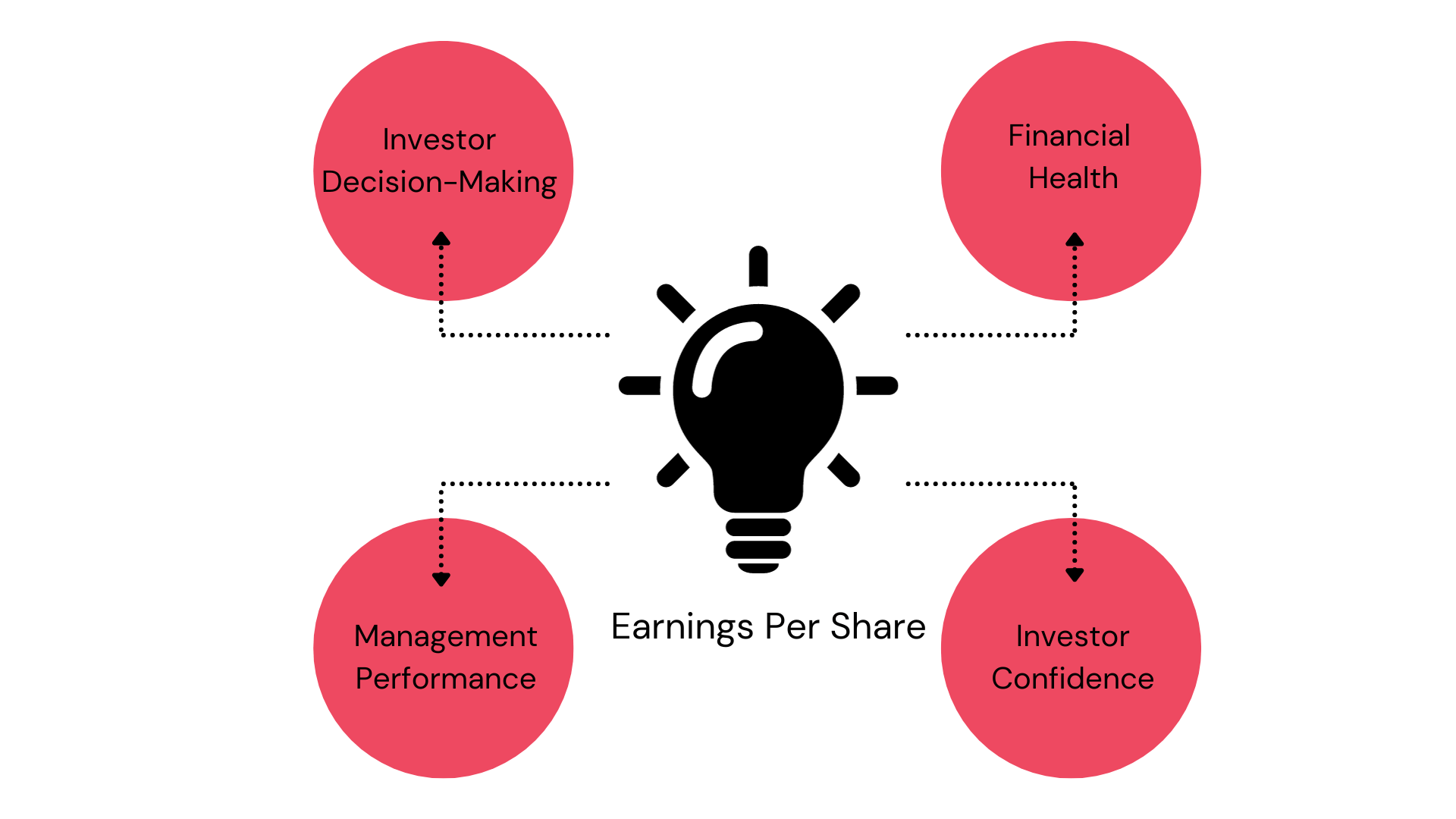Home » PSApedia
Earnings Per Share
Learn the Significance of Earnings Per Share (EPS) - A Key Metric for Investors and Businesses.

What Is Earnings Per Share (EPS)?
EPS is a measure of a company’s profit per share of stock. It shows how much money each shareholder receives. It demonstrates the amount of money each stock would generate if the shareholders received all the profits. For businesses, and especially those in the finance sector, this figure serves as an indicator of a company’s profitability.
Understanding a company’s EPS can help investors make informed decisions about their investments and assess a company’s financial health and performance. EPS is an important measure used to assess a company’s financial strength and growth potential.
Why EPS is Important?
EPS plays a vital role in the investment world, and here’s why:
- Valuation: You can use EPS to calculate the Price-to-Earnings (P/E) ratio, which helps you value companies.
- Performance Measurement: Investors and analysts use EPS to gauge a company’s performance against its competitors or its past records.
- Dividend Prediction: A consistent and rising EPS often indicates that the company might pay better dividends in the future.
Higher EPS can lead to higher stock price as more investors may be interested in a company with higher profits. For businesses operating in a project-driven environment, understanding metrics like EPS can be crucial to long-term success.

Why EPS is Important?
How to Calculate EPS?
The formula to calculate EPS is:
EPS = (Net Income − Dividends on Preferred Stock) / Average Outstanding Shares
Example:
Imagine Company X had a net income of $1,000,000 this year. They paid out $100,000 in dividends on their preferred stock and had 500,000 average outstanding shares for the year.
{EPS} = {1,000,000 – 100,000/}{500,000} = $1.80
This means Company X earned $1.80 per share.
EPS vs Revenue vs Net Profit
While EPS provides insights into per-share profitability, it’s essential to differentiate it from other metrics:
- Revenue: This is the total income generated by sales of goods or services. Do not confuse it with the earnings per share (EPS).
- Net Profit: Deduct all expenses, taxes, and costs from the total income to obtain this. It represents the overall profitability of the business, while EPS is the profitability per share.
For in-depth financial management strategies and understanding revenue, check out this resource.
| Metric | Definition | Example |
|---|---|---|
| EPS (Earnings Per Share) | EPS is a financial ratio that represents the portion of a company’s profit allocated to each outstanding share of common stock. It is calculated as (Net Profit / Number of Outstanding Shares). |
If a company has a net profit of $1 million and 500,000 outstanding shares, the EPS would be $2.00 ($1,000,000 / 500,000). |
| Revenue | Revenue, also known as sales or turnover, is the total amount of money generated by a company from its primary operations, such as selling goods or providing services, before any expenses are deducted. | If a company generates $5 million in revenue from selling products or services, that’s the total amount of money it earned from those activities. |
| Net Profit | Net profit, often referred to as net income or profit after tax, is the amount of money a company has left after deducting all expenses, including operating costs, interest, and taxes, from its revenue. | If a company has $3 million in expenses and $6 million in revenue, its net profit would be $3 million ($6 million – $3 million). |
How EPS is Used in Financial Analysis?
EPS is widely used in:
- Comparative Analysis: Comparing a company’s EPS over different periods can reveal growth or decline trends.
- Investment Decisions: A rising EPS can make a stock more attractive to investors. Conversely, a declining EPS might indicate potential issues.
- Company’s Financial Health: It provides a quick snapshot of a company’s profitability on a per-share basis.
For those in the Professional Services sector, understanding such metrics and how they impact business operations can be discovered in this article.
Ready to Optimize Your EPS?
Understanding EPS is one piece of the financial puzzle. To truly harness the power of financial metrics and optimize them, consider using a specialized software solution like KEBS. With KEBS, you can streamline project financials, deal management, and more.

KEBS Finance Management
For a hands-on experience with KEBS and its capabilities, contact us or take a demo today.



